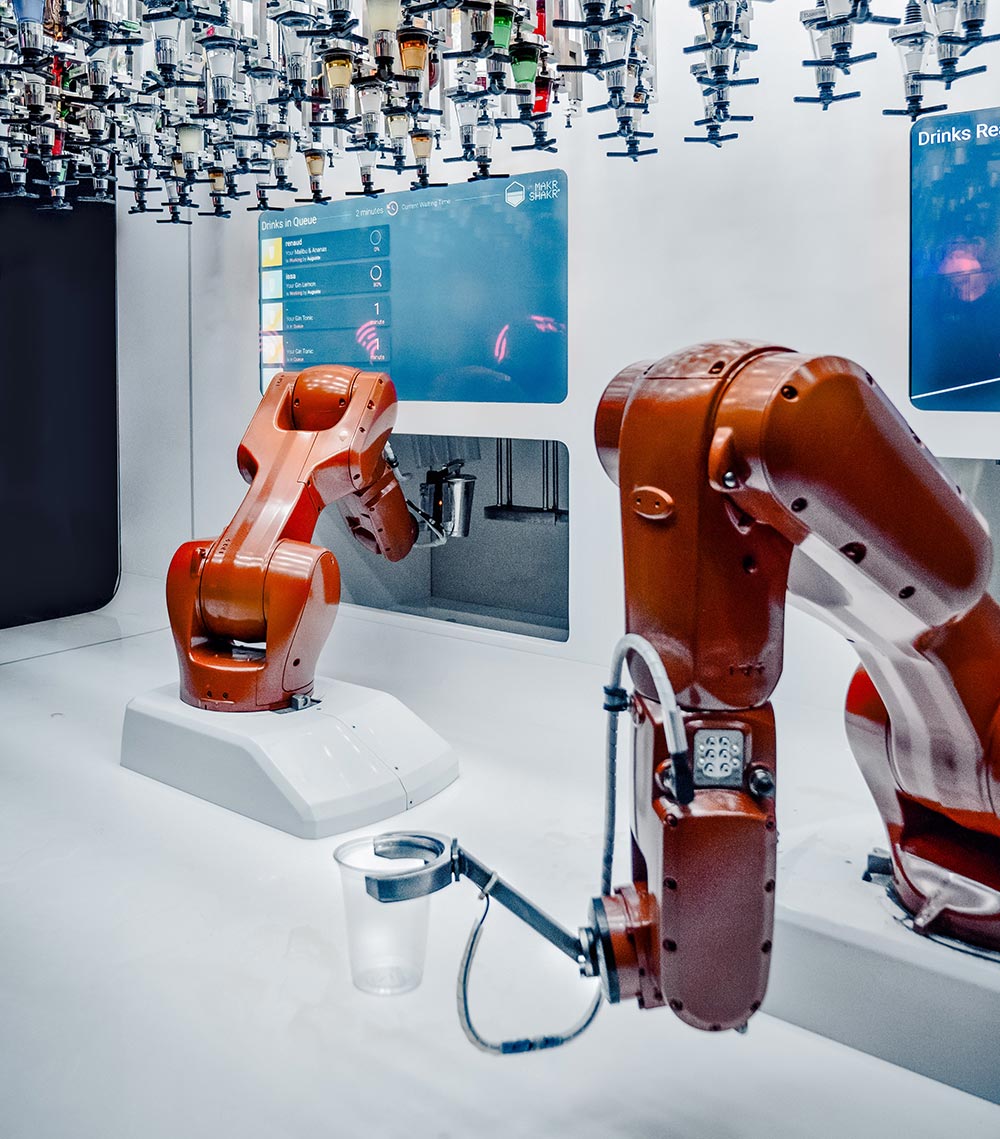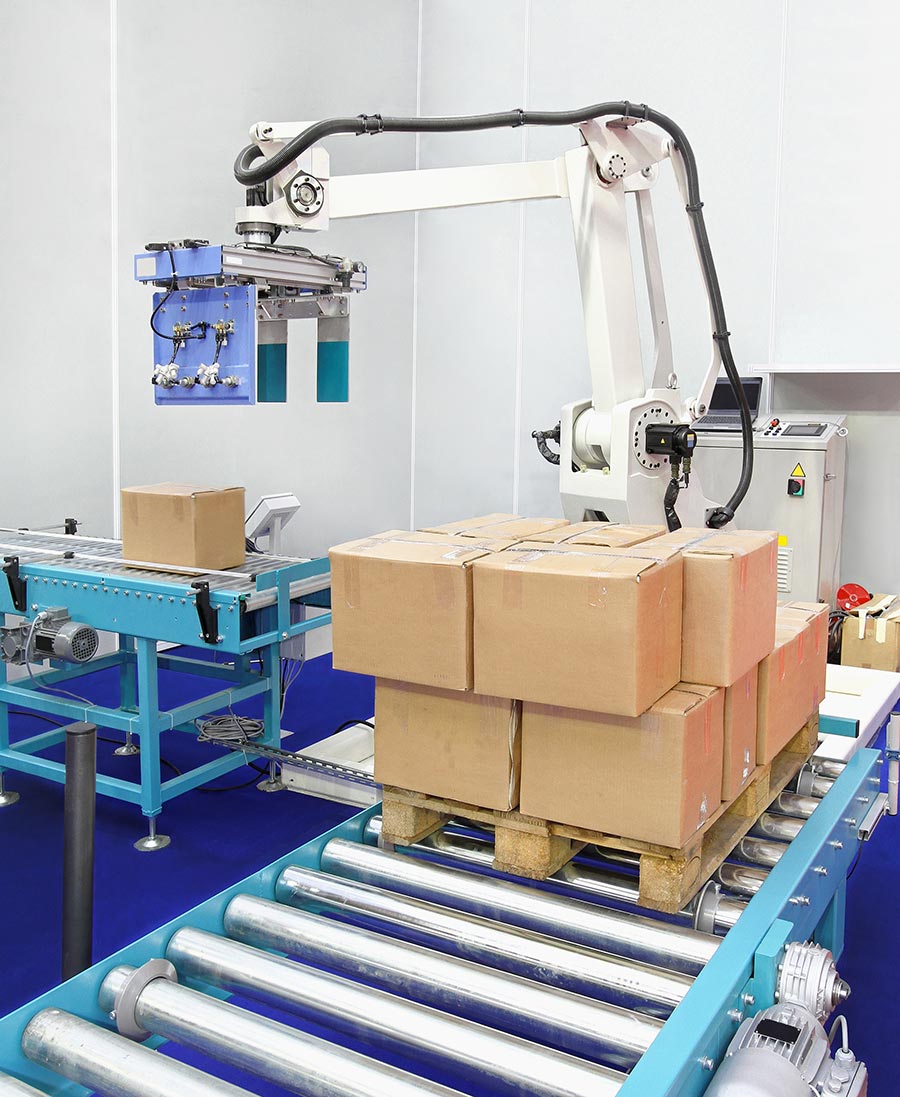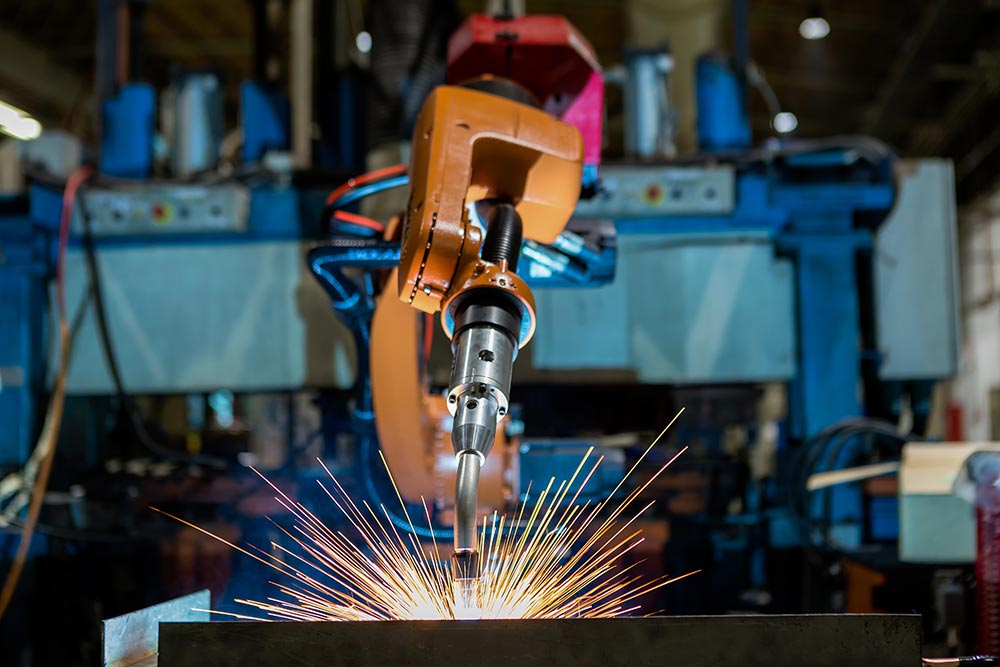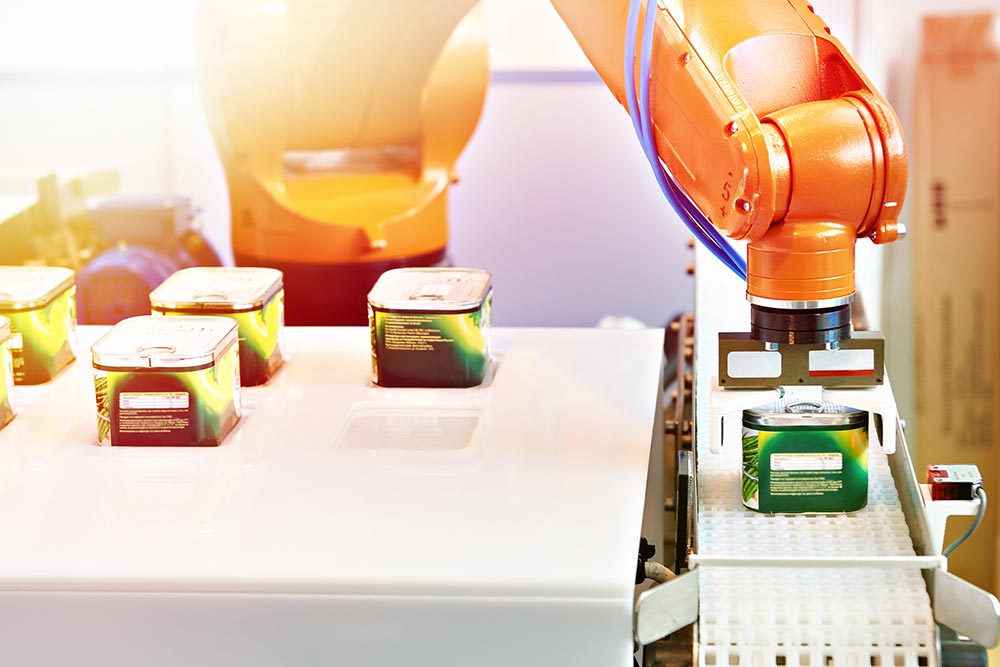Robotic Arm
Robotic arms, also known as articulated robotic arms, are fast, reliable, and accurate and can be programmed to do various tasks in a variety of environments. They are used in factories to automate execution of repetitive tasks, such as applying paint to equipment or parts; in warehouses to pick, select, or sort goods from distribution conveyors to fulfil consumer orders, or in a farm field to pick and place ripe fruits onto storage trays.

Benefits
Improved safety
Robotic arms help keep workers safe by operating in environments that are Robotic arms can operate 24 hours a day, seven days a week without fatigue, allowing businesses to keep production, inspections, or other tasks going continuously to increase output.
Improved efficiency and productivity
By their very nature, robotic arms performs consistently and much more accurate than humans for task that requires high precision.
Application

Palletizing
Robotic Arm automated the process of placing goods or products onto pallets.
By automating the process, palletizing becomes more accurate, cost-effective, and predictable.
The use of robotic arms also frees human workers from performing tasks that present a risk of bodily injury.

Material Handling
Material-handling robotic arms can help create a safe and efficient warehouse by ensuring goods and materials are properly stored, easy to find, or transported correctly.
Automation process will help to accelerate the delivery of goods to customers, prevent workplace accidents, and improve the efficiency of a facility.

Welding
Welding is a task that can be performed by robots in advanced
industrial settings such as automotive manufacturing.
Given its critical impact on product quality, welding is an excellent
candidate for advanced robotics with vision and AI augmentation for inline quality inspection.

Pick and place
Pick-and-place robots are typically used in modern manufacturing and logistics.
They are equipped with advanced machine vision systems to identify an object, grasp it, and move it from one location to another, quickly and efficiently to increase speed of production and distribution of hazardous goods and executing tasks that present high risk of injury to humans.



